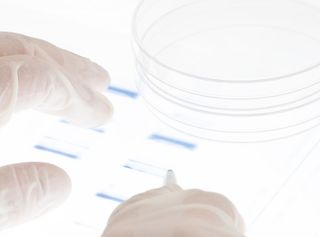Rapid ID of bin Laden Uses Relatives' DNA Matches

DNA testing reportedly has provided "99.9 percent certainty" that the person U.S. forces shot to death Sunday in Pakistan was Osama bin Laden.
So certain an identification of bin Laden’s body would depend upon whatever genetic material the U.S. government could get from other sources for comparison, a forensic DNA expert noted today (May 2), and would be made easier by any unusual features in the genetic makeup of the mastermind behind the 9/11 terrorist attacks.
"If he had very rare alleles [gene variants], one family member might be enough to get certainty," said John Butler, a leading expert on forensic DNA analysis at the National Institute of Standards and Technology. "If he has a common genetic profile, you might need more relatives."
The U.S. government would have to compare its "question sample" from bin Laden, who reportedly was shot to death by U.S. forces, with known samples that form his known genetic profile.
Known samples would likely be from close family members, which would allow the government to look for indirect matches, said Butler, who works for the institute’s biotechnology division in Gaithersburg, Md., told InnovationNewsDaily. It is less likely, Butler said, that the U.S. government has DNA taken from something like bin Laden's razor or toothbrush with which to make a direct match.
The U.S. government initially compared the DNA from the body to that of a sister of bin Laden’s who died in Boston, ABC News reported. But having more genetic samples from different family members would boost the certainty of any identification from DNA testing.
The Associated Press cited sources in reporting that the identification of bin Laden has only a 0.1 percent chance of error.
Sign up for the Live Science daily newsletter now
Get the world’s most fascinating discoveries delivered straight to your inbox.
DNA testing technology has a history that stretches back to 1985. One commonly used method in forensic DNA testing, called a “short tandem repeat” test, has been deployed for more than 15 years, Butler said. The STR test looks at short, repeating DNA sequences among an individual's genetic makeup.
"It's not brand new technology," Butler explained. "They would use something they had confidence in."
Butler said he expected the U.S. government would be careful to repeat DNA tests to confirm the first results.
"I highly doubt there would be any effort to skimp on the results, because this has such high implications," said Butler, who had helped the New York City office of chief medical examiner identify the remains of victims of the 9/11 attacks.
This story was provided by InnovationNewsDaily, a sister site to LiveScience.

